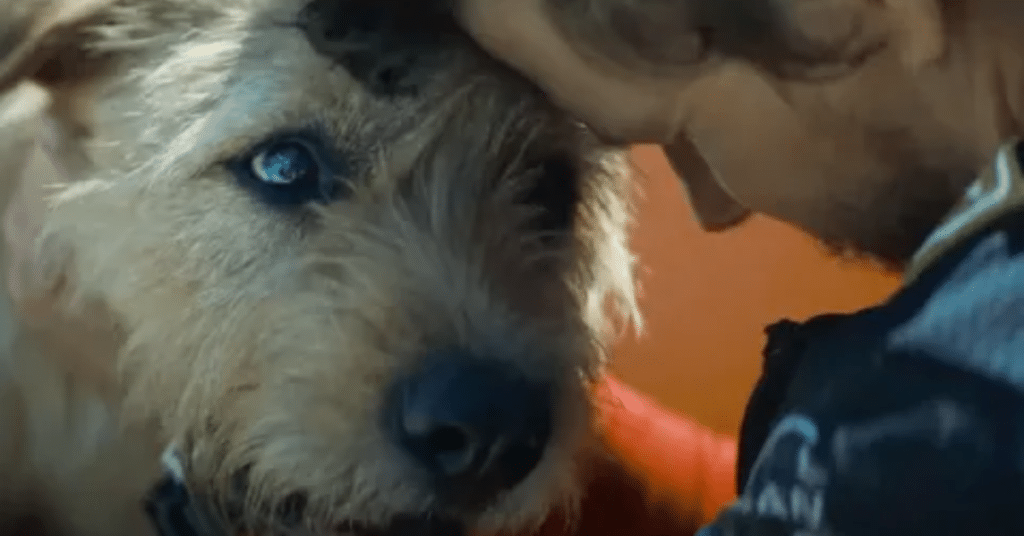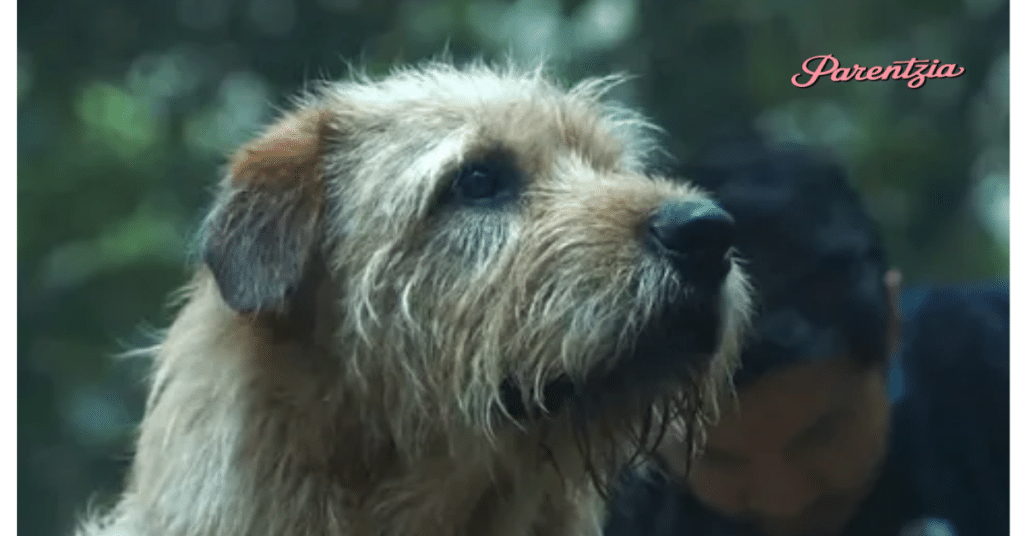Arthur the King, directed by Simon Cellan Jones and starring Mark Wahlberg, takes viewers on an emotional journey that transcends the typical adventure narrative. Based on the true story of Mikael Lindnord, a Swedish adventure racer who adopts a stray dog during an extreme race through the Amazon jungle, Arthur the King is a heartwarming and gripping survival tale. It’s not just about overcoming physical challenges; it’s about the profound bond that forms between man and dog in the face of adversity. In this comprehensive Arthur the King movie review, we’ll explore every facet of this film to help you decide if it’s the right movie for your family.
Introduction
Arthur the King brings together the excitement of adventure, the tension of survival, and the emotional depth of a human-animal bond. Released by Lionsgate, this film is a significant entry in the genre of family-friendly adventure movies, though it goes much deeper than your typical survival story.

The true tale of a world-class adventure racer and a stray dog he finds while racing through the perilous Amazon creates a captivating narrative, but what sets it apart from other survival films is the emotional core that centers on loyalty, trust, and companionship.
But the big question remains: Is Arthur the King safe for kids? In this review, we’ll examine everything from the film’s themes and messages to its PG-13 age rating and discuss whether this is a movie the entire family can enjoy.
You might also like “Lunar New Year Movies for Kids: Celebrating Culture, Fun”
Plot Summary
At the heart of Arthur the King lies a simple but deeply moving story: a stray dog changes the life of an elite athlete during one of the toughest races in the world. Mikael Lindnord (played by Mark Wahlberg) is the leader of a Swedish adventure racing team. While competing in an extreme race through the Amazon jungle, Lindnord encounters a dirty, stray dog. Despite the dangers and harsh environment, Lindnord decides to share his food with the dog, naming him Arthur. What follows is a test of endurance, both for the team and their new companion. Arthur refuses to leave Lindnord’s side, despite the team’s grueling journey through rivers, mountains, and dense forests.
The film is not just about survival; it’s about the bond between Mikael and Arthur, which grows stronger as they face physical hardships and life-threatening challenges. Arthur becomes an integral part of the team, and they must work together to navigate the dangerous terrain of the Amazon.
Themes of loyalty, perseverance, and teamwork drive the story forward, making Arthur the King an adventure that resonates with families and animal lovers alike.
Themes and Messages
The Human-Animal Bond
At its core, Arthur the King is about the powerful connection between humans and animals. Arthur’s loyalty and determination to stick with Mikael, despite the harsh conditions, symbolize hope, resilience, and the unspoken bond between a man and his dog. For families, this bond is a key takeaway: animals can change lives, and this movie serves as a testament to that.

The film excels in portraying how Arthur becomes more than just a stray dog. He is a symbol of hope, helping the team push forward when the odds are against them. In particular, Arthur’s unwavering loyalty highlights the unconditional love pets provide, even in the most dangerous situations.
“Arthur is not just a dog; he’s a reminder that sometimes, the most unexpected bonds can carry us through the hardest times.” – Mikael Lindnord.
Survival and Endurance
Another significant theme in Arthur the King is survival. Set against the unforgiving backdrop of the Amazon jungle, the movie shows how both man and dog must overcome their limits to stay alive. From treacherous rivers to wild animals, every step of the journey pushes the characters to their breaking points.
For viewers, this theme goes beyond the typical survival movie. The film effectively uses the physical challenges to reflect emotional struggles, particularly for Mikael, who starts the race as a hardened, focused athlete and gradually softens as he bonds with Arthur.
Teamwork and Leadership

As a leader of an elite adventure racing team, Mikael must balance his responsibilities to his teammates while managing the unexpected arrival of Arthur. His journey from seeing Arthur as a hindrance to viewing him as an essential part of the team is a key plot point. This theme of leadership and teamwork is particularly poignant for audiences, especially children and teens learning about the value of collaboration.
The film also provides an excellent discussion point for parents and kids about compassion, responsibility, and how leaders can emerge in unexpected ways.
Character Development
Mikael Lindnord (Mark Wahlberg)
Mark Wahlberg’s portrayal of Mikael Lindnord offers a nuanced look at a man driven by competition but deeply affected by his unexpected bond with Arthur. Wahlberg, known for his action-packed roles, brings a certain ruggedness to the character while showing vulnerability as Mikael gradually forms a connection with Arthur.
Through Wahlberg’s performance, we see Mikael’s growth not just as a leader but as a compassionate individual. His decision to care for Arthur, even when it jeopardizes the team’s performance, marks a pivotal moment in his character arc.
Key Character Traits:
- Leadership
- Compassion
- Resilience
Arthur (The Dog)

Arthur, played by multiple well-trained dogs to capture different aspects of his personality, is the heart of the movie. The film does a brilliant job of giving Arthur a personality without over-anthropomorphizing him. He is a dog—instinctive, loyal, and strong-willed—but his quiet presence brings emotional weight to many of the film’s key scenes.
Arthur’s resilience in the face of danger, his loyalty to Mikael, and his instinct to protect the team elevate the stakes of the movie. His role transcends that of a sidekick; he is the emotional core of the film.
Supporting Cast
Simu Liu plays a key supporting role in Arthur the King, offering a counterbalance to Wahlberg’s more serious, intense character. The supporting cast is integral in showing the dynamic nature of the team and how Arthur’s presence affects everyone.
While Wahlberg and Arthur dominate the screen, Liu’s character and the rest of the team add layers to the story, contributing to the movie’s themes of teamwork, loyalty, and leadership.
Cinematography and Visuals
Amazon Jungle as a Character
One of the strongest visual elements in Arthur the King is the use of the Amazon rainforest as a character in itself. The cinematography beautifully captures the hostility and beauty of the natural world. Wide shots of the vast jungle, winding rivers, and towering trees immerse the audience in the environment, making the dangers feel real.
The film’s use of nature to heighten tension is particularly effective during survival sequences. The lush greens and the roaring rivers create a vivid contrast to the moments of quiet between Mikael and Arthur.
Visual Techniques:
- Wide landscape shots to emphasize isolation.
- Close-ups during emotional moments to create intimacy.
- Dynamic action sequences with fluid camera work.
Action and Survival Sequences
The survival scenes are some of the film’s most gripping moments. From rafting down dangerous rivers to navigating treacherous cliffs, the cinematography captures the scale and peril of the team’s journey. Each sequence is intense, making the stakes feel higher, especially with Arthur by their side.
Direction and Screenplay
Simon Cellan Jones’s Direction
Simon Cellan Jones delivers a well-paced and emotionally rich film. His direction balances action with heartfelt moments, ensuring that the movie appeals to both adventure enthusiasts and families. Jones excels in portraying the human-animal bond in a way that feels authentic, never crossing into overly sentimental territory.
The pacing is solid, though there are moments when the film slows down during quieter scenes. However, these moments provide necessary emotional depth, giving audiences time to connect with the characters.
Screenplay Analysis
The screenplay by Michael Brandt captures the essence of the true story without veering too far into melodrama. The dialogue feels natural, and while there are some predictable moments typical of survival films, the emotional core remains strong. Arthur’s presence speaks volumes, even though he never utters a word.
One of the screenplay’s strengths is its ability to create tension, not just from the external dangers of the jungle, but from the internal conflict within Mikael as he learns to balance his competitive nature with his compassion for Arthur.
Emotional Impact and Audience Reception
Emotional Resonance
For many viewers, the emotional core of Arthur the King will hit home. The bond between Mikael and Arthur is deeply moving, with key scenes that tug at the heartstrings. The film uses moments of quiet, unspoken emotion to convey the depth of their relationship, making the eventual conclusion even more powerful.
The scene where Mikael contemplates whether to keep Arthur with the team or leave him behind is one of the movie’s most emotionally charged moments. It highlights the internal struggle of choosing between duty and compassion.
Target Audience
Arthur the King is clearly geared toward families, animal lovers, and adventure fans. The movie’s PG-13 age rating reflects its slightly intense survival scenes, but the emotional core makes it accessible to a broad audience. While the survival scenes might be too intense for younger children, older kids, teens, and adults will find the film’s themes relatable.
Reception
Early audience reactions have been positive, particularly around Arthur’s role in the story. Families and animal lovers have praised the film for its heartwarming depiction of the human-animal bond, while critics have acknowledged its solid performances and emotional depth.
Strengths and Weaknesses
| Strengths | Weaknesses |
| Emotional depth and strong human-animal bond | Occasional pacing issues |
| Stunning visuals of the Amazon | Predictable survival tropes |
| Mark Wahlberg’s strong performance | Some underdeveloped supporting characters |
| Well-executed survival sequences |
Comparison with Similar Movies
Arthur the King invites comparisons with other human-animal survival films like Togo and The Call of the Wild. What sets it apart is the real-life basis of the story and the gritty depiction of the Amazon jungle. Compared to films like Into the Wild or 127 Hours, Arthur the King focuses more on the emotional rather than the physical toll of survival, which makes it more family-friendly.
Conclusion
Arthur the King is more than just a survival story—it’s a tale of loyalty, companionship, and the incredible bond between man and animal. With Mark Wahlberg delivering a heartfelt performance and Arthur stealing the show, the film delivers an emotional punch that will resonate with families and adventure lovers alike.
While it’s not without its flaws, Arthur the King is a solid family-friendly adventure that offers a perfect mix of action, emotion, and beautiful visuals.
FAQ Section
Is Arthur the King based on a true story?
Yes, the film is based on the true story of Swedish adventure racer Mikael Lindnord and his dog Arthur.
Is Arthur the King safe for kids?
With a PG-13 rating, Arthur the King includes intense survival scenes, but it is generally safe for kids aged 13 and up.
Is Arthur the King a family movie?
Yes, it’s a great family movie, particularly for older kids and teens who enjoy emotional stories and adventure films.

Tina Grey is an experienced blogger with a passion for uncovering the best in film. With years of writing and a keen eye for detail, Tina brings insightful reviews and engaging content to Parentzia. Her deep love for movies, combined with her expertise, helps readers discover must-watch films across genres. When she’s not reviewing, Tina enjoys exploring new cinematic trends and sharing her love of film with her audience.







